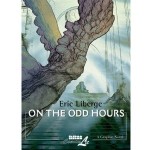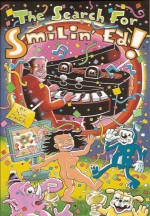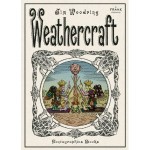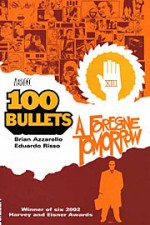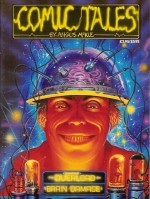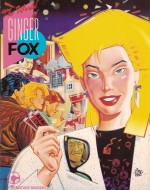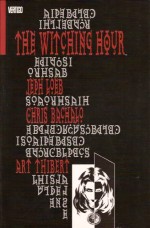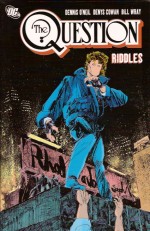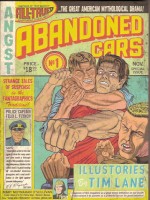
By Osamu Tezuka (Vertical)
ISBN: 978-1-934287-74-3
In a creative career that produced over 700 hundred different series and more than 150,000 pages (many of them only now finally becoming available to people who can’t read Japanese), Osamu Tezuka captivated generations of readers across the world with tales of history, fantasy, romance and startling adventure. Perhaps his most intriguing creation is Black Jack, an underground surgeon who overcame horrendous childhood injuries and, despite carrying many scars within and without, roams the globe, curing anybody who can pay his deliberately daunting, exorbitant prices – usually cash, but sometimes in more exotic or metaphysical coin.
He is the ultimate loner, except for Pinoko, a little girl he literally built from the organic scraps of an early case. Unlicensed by any medical board on Earth, he holds himself to the highest ethical standards possible… his own. All the troubles and wonders of this world can be found in medical dramas, and here elements of rationalism, science-fiction, kitchen sink drama, spiritualism, criminality, crushing sentimentality and shining human frailty are woven into an epic of Magical Realism to rival the works of Fuentes and Gabriel GarcÃa Márquez.
Black Jack is at once a lone wolf hero, troubled genius, passionate outsider and amoral humanitarian combining the indomitable will of Doc Savage with the intellect of Sherlock Holmes and ambivalent, intuitive drive of Dr. Gregory House. Hideously scarred, viciously spurning all human comfort, the unlicensed mercenary medic endures public condemnation and professional scorn, as he continually confronts the cutting edges of medicine and reality.
His esteemed creator Osamu Tezuka was born in Qsaka Prefecture on 3rd November 1928, and as a child suffered from a severe illness. The doctor who cured him inspired him to study medicine, and although the cartoonist began his professional drawing career while at university, he persevered with his studies and qualified as a doctor too.
Facing a career crossroads, Tezuka’s mother advised him to do the thing that made him happiest. He never practiced medicine but the world was gifted with such classic cartoon masterpieces as Tetsuwan Atomu (Astro-boy), Kimba the White Lion, Buddha, Adolf and literally hundreds of other graphic narratives. Along the way Tezuka incidentally pioneered, if not actually invented, the Japanese anime industry.
Equally able to speak to the hearts and minds of children and adults, Osamu Tezuka’s work ranges from the charming to the disturbing, even terrifying. In 1973 he turned his storyteller’s eye to his past college studies and created Burakku Jakku, a lone-wolf doctor living beyond society’s boundaries and rules: a heartless mercenary miracle-worker for the right price yet still a deeply human if wounded soul who works his surgical wizardry from behind icy walls of cool indifference and casual hostility…
This tenth volume begins with ‘Avina’s Isle’ a fantastic doomed romance as a pearl diving South Sea native risks everything to marry his princess, utterly unaware of the sinister forces arrayed against him. There are some injuries no scalpel or suture can remedy…
‘The Mask Chosen’ is a revelatory tale of vengeance that cuts to the heart of Black Jack’s frightful past as the surgeon’s missing father emerges after decades with an outrageous request, whilst ‘Revenge is My Life’ shows a different side to Man’s basest instinct in a passionate, convoluted story which sees the Surgical Samurai go to superhuman lengths to repair a shattered woman with every reason to hate him.
Possibly the most moving Black Jack story yet translated, ‘Unfinished House’ reveals why a man with all the cash that the rogue doctor has earned still lives in a ramshackle hovel, a powerful tale of debts honoured and obligations met. ‘Strangers at Sea’ is a tense nautical crime drama mystically transformed by the expansive, all-encompassing, uncompromising love Dolphins display for mankind. Bring tissues: many tissues.
‘Pinoko Returns’ stars the doctor’s big-hearted little assistant who adopts a thieving conman, only to suddenly disappear without trace. Black Jack, the man with no emotions, must weigh his heart’s greatest desire against the slimmest chance of finding his pestiferous creation…
Years before drug mules became a common storytelling Maguffin ‘The Man Who Threw Up Capsules’ used the phenomenon to weave a complex tale of corrupt family practitioners and the price paid for social prestige, whilst ‘Flesh And Blood’ returns Black Jack to his dying father’s side and introduces a sister he never knew he had. Of course it cannot end well…
‘Burglary’ shows the power and weakness of utter devotion as the Super Surgeon is asked to reconstruct the unique prosthetic limbs of a total amputee. But who would steal such intensely personal items and why does Lady Jane not want her arms and legs back? ‘Ashes and Diamonds’ is a much less disturbing story: a cool, cynical caper starring a young, idealistic doctor hired by a rich old man to check the infamous medical maverick’s work. It seems the billionaire paid Black Jack a fortune to implant billions in gems inside his failing body, and now he needs to know if the notoriously greedy mercenary medic did so or just kept the loot for himself…
In Hawaii Black Jack survives a ‘Hot Night’ when an unlovable Vietnam veteran requests his expertise after he nearly killed for the third time, ‘Ransom’ sees an incomprehensible relationship blossom between a vicious kidnapper and his victim whilst ‘Mannequin and Officer’ is a story that could only happen in Japan, as a cop develops a peculiar affection for a traffic dummy. Luckily Black Jack owes him a favour…
‘Playing Doctor’ ends this volume on a high and happy note as a school bully and his favourite victim join forces to cure a little girl. Bu then, she has never met the real Black Jack…
One thing should always be remembered when reading these stories: despite all the scientific detail, all the frighteningly accurate terminology and trappings, Black Jack isn’t medical fiction; it’s an exploration of ethics and morality with medicine raised to the level of magic… or perhaps duelling. This is an epic of personal combats, a lone gunfighter battling hugely oppressive counter-forces (the Law, the System, casual human cruelty, himself) to win just one more victory: medicine as mythology, won by a Ronin with a fast car and a Gladstone bag.
Thrilling, charming, bitterly insightful and overwhelmingly moving, these addictive magical stories of a medical wizard in a cruel, corrupt and ultimately unknowable universe will shake all your preconceptions of what storytelling can be…
This book is printed in the Japanese right to left, back to front format, and also contains an excerpt from the forthcoming new edition of Osamu Tezuka’s landmark graphic biography Buddha.
© 2009 by Tezuka Productions. Translation © 2009 Vertical, Inc. All Rights Reserved.
